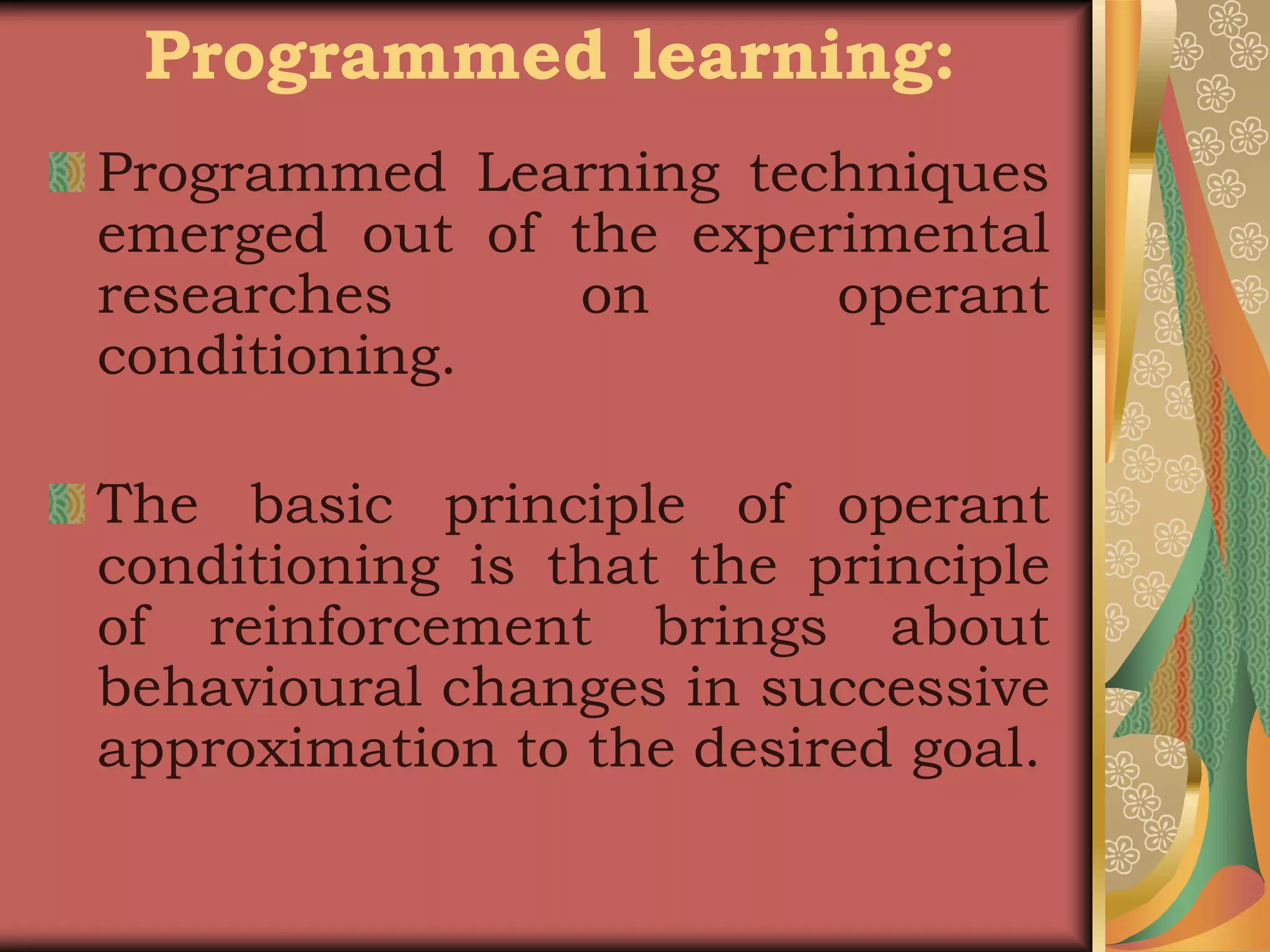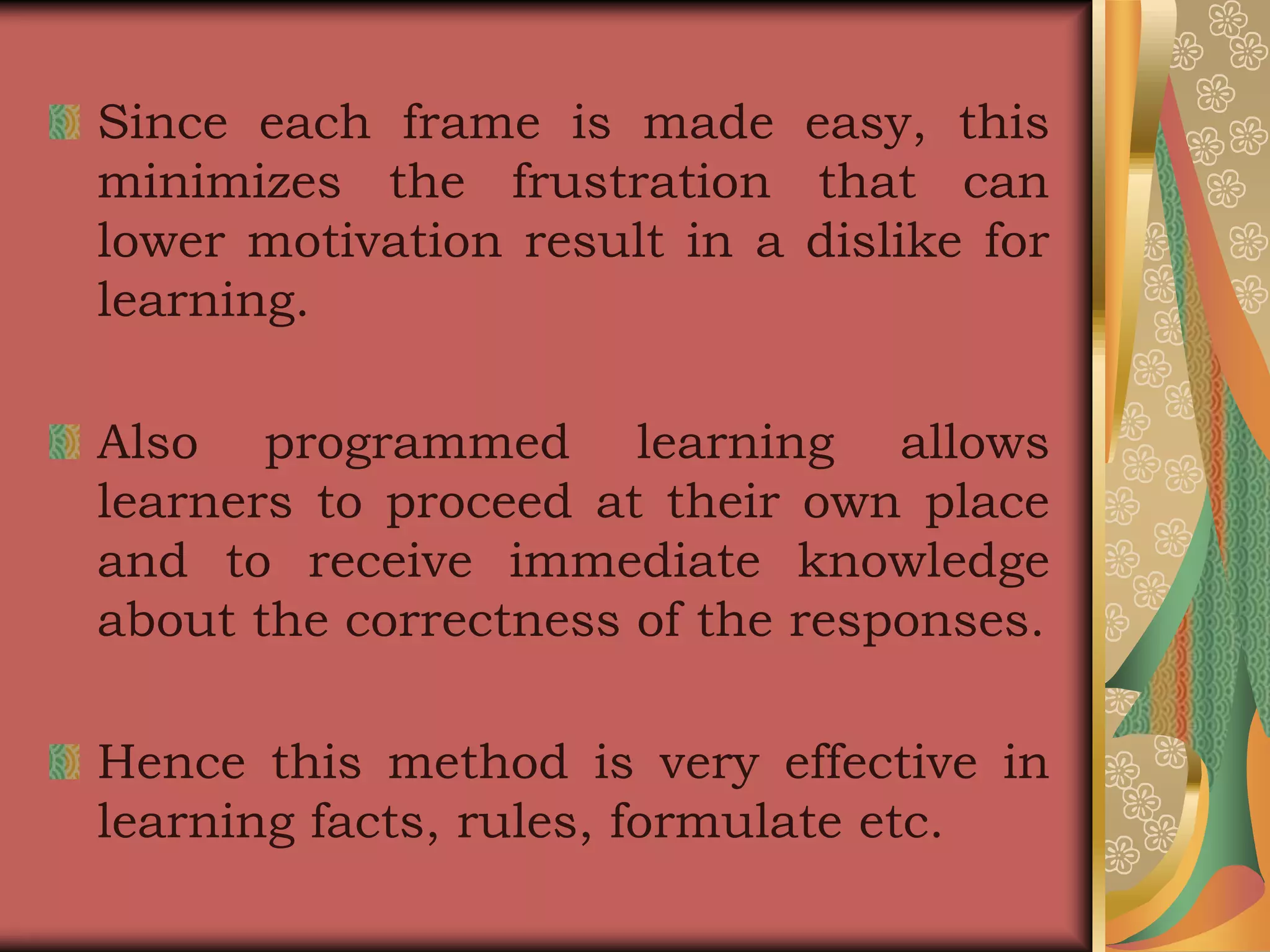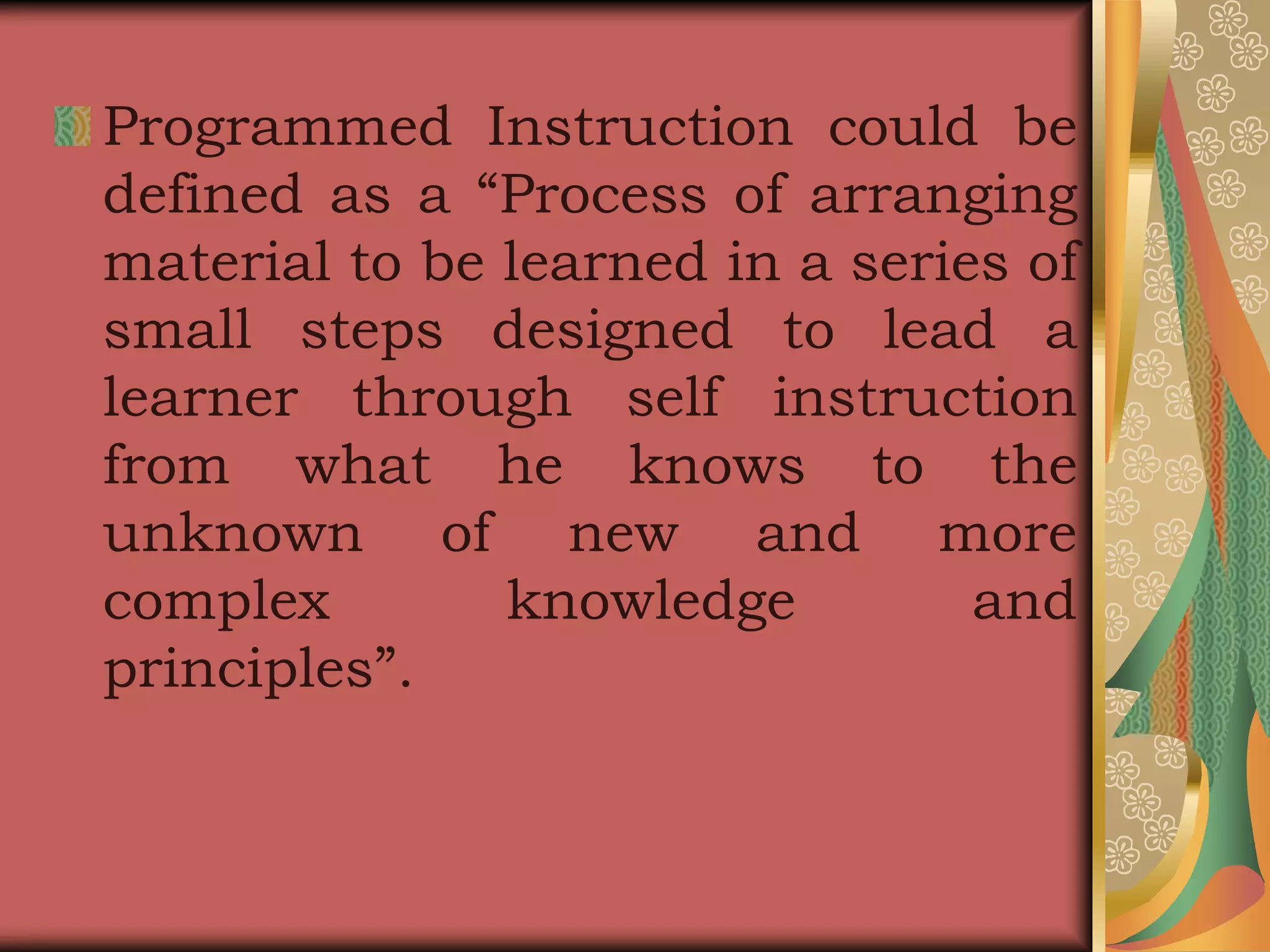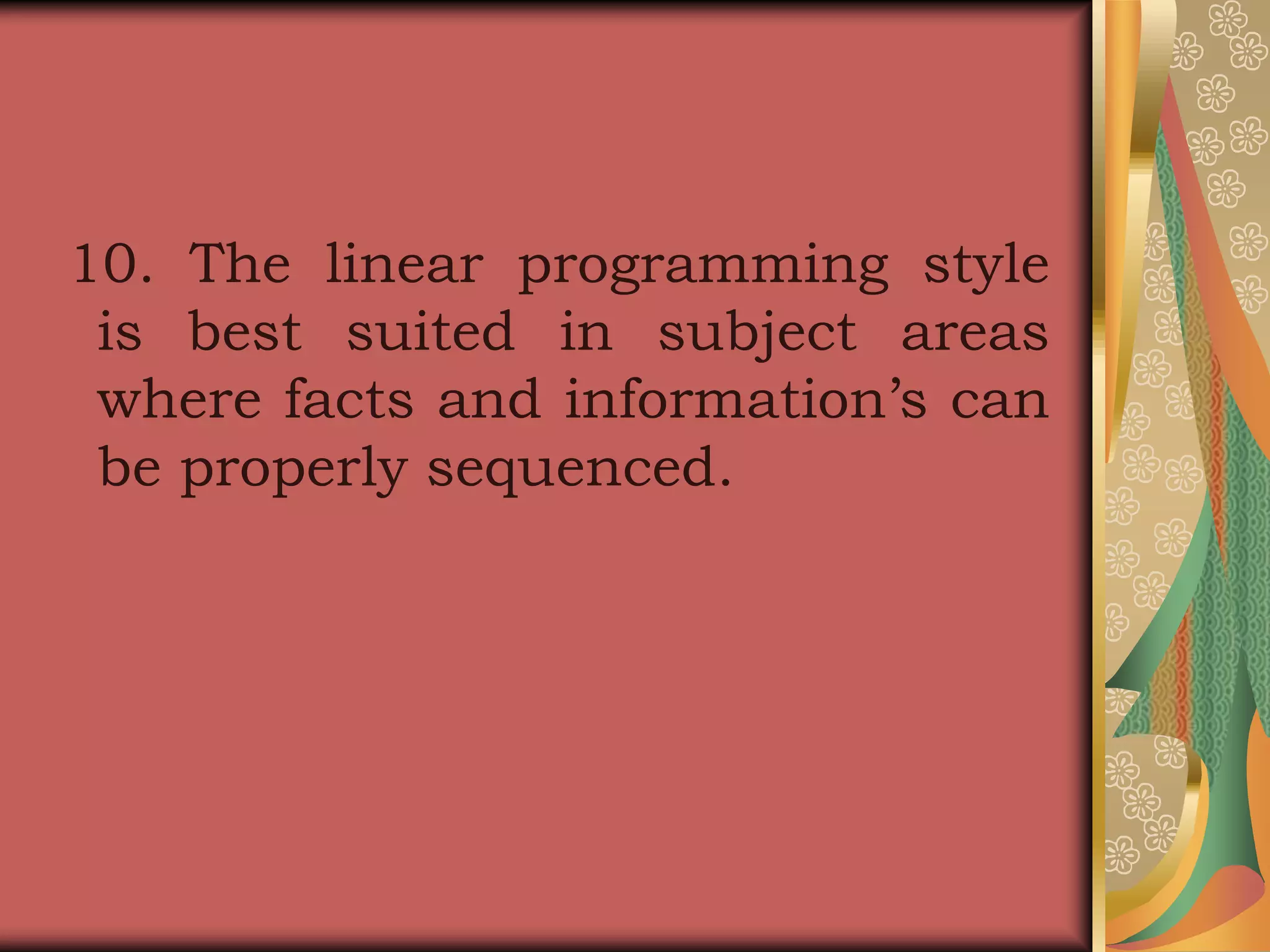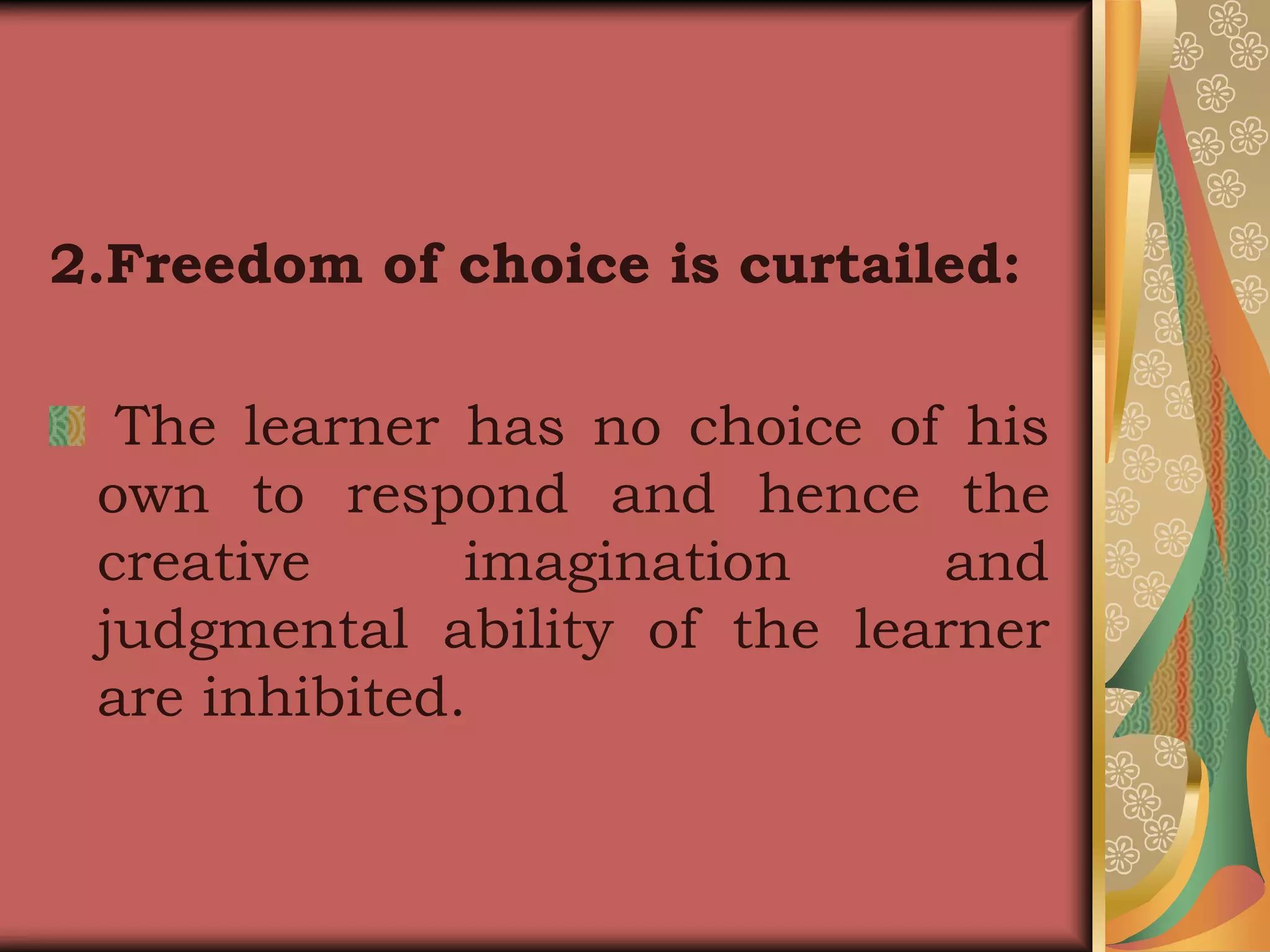The document discusses programmed learning, a pedagogical approach stemming from B.F. Skinner's operant conditioning research, which allows individualized instruction through structured materials known as frames. It outlines principles of programmed learning, including small steps, active responding, immediate feedback, self-pacing, and student testing, and differentiates between linear and branching programming styles. Advantages of programmed learning include improved education quality and tailored learning experiences, while limitations include potential lack of motivation and high costs, particularly in branching programming.




